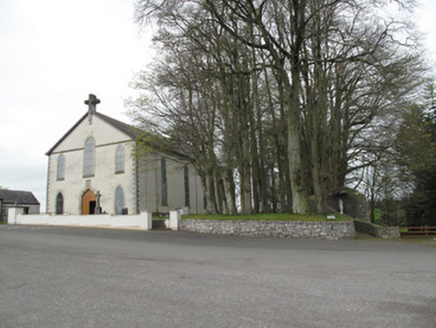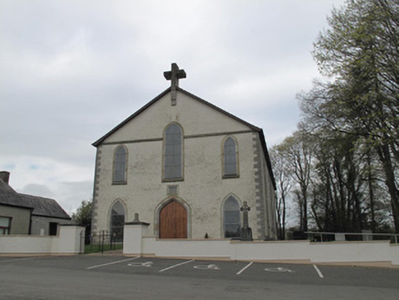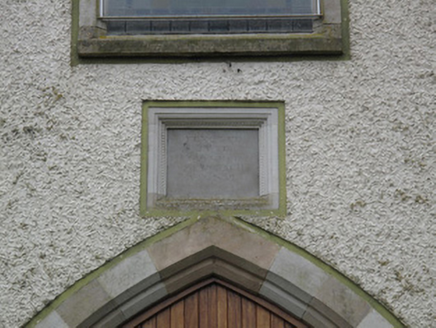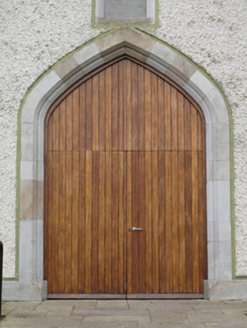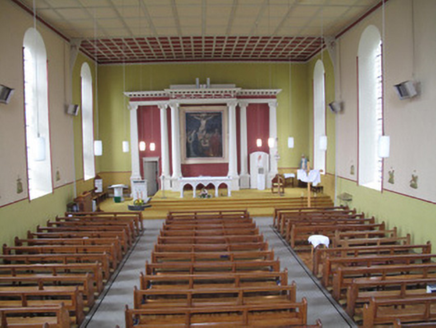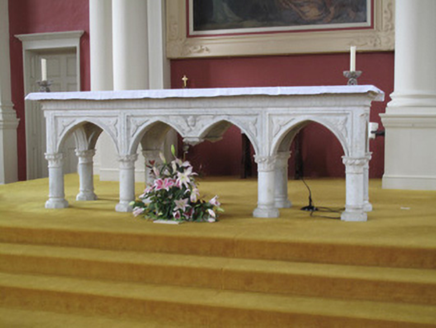Survey Data
Reg No
41400707
Rating
Regional
Categories of Special Interest
Architectural, Artistic, Social
Original Use
Church/chapel
In Use As
Church/chapel
Date
1835 - 1920
Coordinates
270714, 341948
Date Recorded
13/04/2012
Date Updated
--/--/--
Description
Freestanding gable-fronted barn-type Roman Catholic church, built 1837, remodelled c.1900, having four-bay nave. Pitched slate roof, with sandstone copings, and moulded cast-iron gutters on projecting eaves. Metal open ogee bellcote with cross finial and bronze bell to west gable apex. Roughcast rendered walls with dressed sandstone plinth and plat-bands to gable at eaves-level, V-jointed quoins. Sandstone inscribed date-plaque over main entrance in frame having cable-moulded border. Pointed-arch window openings throughout, with stone sills. Gable-front has stop-ended chamfered architraves throughout, three gallery-level windows (that to centre heightened), ground floor has two former flanking entrances. Main entrance has Tudor-arch sandstone surround with replacement timber battened double-leaf door. Square-headed doorway to east elevation having timber battened door and paned over-light, with plinth blocks. Set back from road, approached by long tarmacadam drive, with car-park to east, mature trees to north and west, three-bay single-storey gabled rendered school house with addition to south. Marian Grotto (c.2000) to north with modern plaque nearby. Interior refurbished c.1970. Suspended painted panel flat ceiling, painted plastered walls with round-headed stained-glass windows, deeply-splayed reveals with elongated colonnette jambs. Carpeted floors and modern gabled pine pews flanking two aisles. Ornate pro-style Roman Ionic plaster reredos (c.1900) with marble table altar and lectern.
Appraisal
This free-standing single-cell barn-type church was built shortly after Catholic Emancipation and likely replaced an earlier church, as indicated by its isolated setting down a long drive and by a plaque commemorating a former school nearby. Despite remodellings, the church retains its barn-style proportions and an interesting classical-style reredos of c.1900, but no other historic detail has survived late twentieth-century refurbishment. The stained-glass windows appear to be from elsewhere and inserted into the pointed-arch window openings. The church has a connection to Irish novelist William Carelton (1794–1869), whose family home stood nearby.
